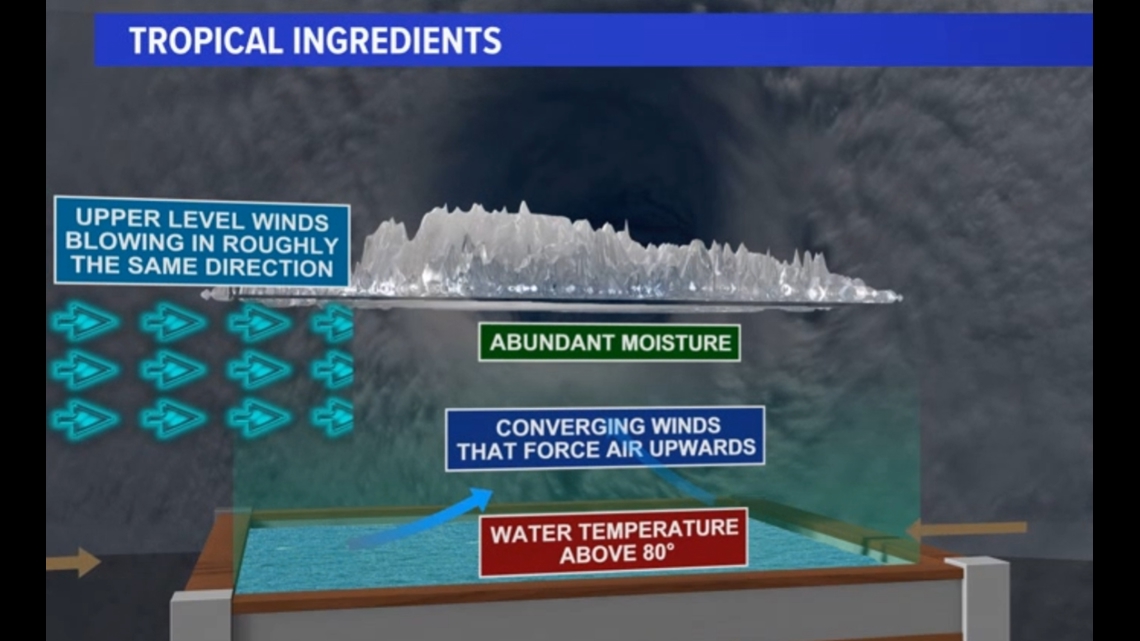JACKSONVILLE, Fla. — Hurricane season officially begins on June 1, not to be confused with May 15 in the Eastern Pacific.
In recent years though, named storms have often formed before the official start of the season. Since 2003, the Atlantic has seen 14 named storms develop before the official start of hurricane season. Notably, in January 2016, Hurricane Alex formed near Bermuda, becoming a rare off-season hurricane.
Starting on May 15, the National Hurricane Center issues a Tropical Weather Discussion that includes the following:
- Current Conditions: Detailed descriptions of existing disturbances, including their location, movement, and potential for development.
- Development Probability: Estimates, typically given as percentages, indicating the likelihood of a disturbance developing into a tropical cyclone within the next 48 hours and five days.
- Meteorological Discussion: Analysis of conditions such as sea surface temperatures, atmospheric moisture levels, wind shear, and other weather systems that could influence storm development.
What do you need to form a hurricane?
There is a reason storms don’t form in the winter, it’s not just because it’s too cold, although that does play a role. Other reasons include atmospheric conditions and event effects from the rotation of the earth. Here is a breakdown.
Warm Ocean Waters
One of the most important factors in hurricane formation is warm ocean water. Sea surface temperatures of at least 80 degrees Fahrenheit are necessary to provide the energy that fuels storms. This typically peaks in September but can be warm enough for tropical formation by May some years.
Moisture in the Atmosphere
High humidity levels in the lower and middle levels of the atmosphere are essential. As warm, moist air rises from the ocean surface, it cools and condenses, forming clouds and releasing latent heat. This heat release further warms the surrounding air, causing it to rise and continue the cycle. This is why cyclones are usually referred to as engines.
Coriolis Effect
The Coriolis Effect, a result of the Earth's rotation, is necessary to give the storm its spin. This effect is weak at the equator and becomes stronger as you move towards the poles. Hurricanes cannot form within about five degrees latitude of the equator because the Coriolis Effect is too weak to initiate the necessary rotation. Of course, Florida and the entire United States for that matter is far north of five degrees so this effect is always present.
Low Wind Shear
Wind shear is the change in wind speed and direction with height. For a hurricane to develop, low wind shear is needed. High wind shear can disrupt the organization of the storm by tilting the structure and dispersing the heat and moisture needed to maintain it.
Pre-existing Weather Disturbance
Often, hurricanes begin as clusters of thunderstorms, known as tropical disturbances. These disturbances can originate from various sources, such as the intertropical convergence zone, African easterly waves, or remnants of cold fronts. During the early part of the tropical season storms forming along the tail end of fronts are more common with African Easterly waves becoming more common later in the season.
Conducive Upper-Level Conditions
Favorable upper-level winds can enhance outflow, the process by which air escapes from the top of the storm. This outflow allows more air to rise from below, reinforcing the storm's strength. The presence of an anticyclone aloft (an area of high pressure at high altitudes) can create these favorable conditions.





